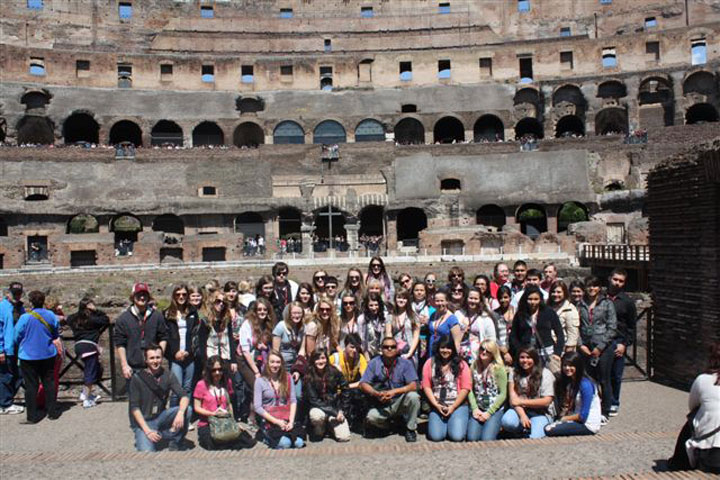Students also immersed themselves into the charms of old-world Firenze: Italian Renaissance. Some climbed the hill to reach to Rocca Maggiore, others opted to see the David by Michelangelo in the Academia Museum; others climbed the 465 steps to reach Brunelleschi’s elegant Duomo (dome) that dominates the skyline. From atop, they could only admire the multicolored marble monuments and Florence’s architecture filled with wall after wall with incomparable art. They also took many pictures of Giotto’s Bell Tower and the aptly named Gates of Paradise, the bronze east doors of the Baptistery that spurred the burgeoning Renaissance. They also visited the tombs of Michelangelo, Galileo, and Machiavelli at the Chiesa de Santa Croce.
Students saw Venice as a unique and unquestionably beautiful city. The weight of its opulent architecture - bulbous domes, gothic spires, and lacy marble - may be sinking the city by 10 inches a century. But none of these mattered to them, for they found themselves immersed in a labyrinth of unique streets; contemplated amazing bridges and beautiful ‘calles’, canals through the Gondola. Piazza San Marco, an airy expanse of arches, sunlight, and pigeons, gave students an opportunity to learn about the multi-domed Basilica that was completed in 1094 but decorated for centuries afterward. It is the final resting place of the apostle St. Mark, Venice’s patron saint. The mosaics beneath the Basilica’s outside arches depict the arrival of St. Mark’s body, stolen from Egypt in 828 by Venetian traders. At the Frothy Venetian Gothic Doge’s Palace, students entered the dungeon, the room of the meetings and beautiful paintings of the Venetian School of many artists. As they traveled to Milan Via Verona, they made a quick stop to contemplate the famous balcony of Romeo and Juliet and a statue of her. Real or not, history tells us that Verona is the setting for Shakespeare’s creation of Romeo and Juliet, and the 14th-century house claims to be Juliet’s. Their final stop was in Milan, Italy’s capital of fashion and finance. They spent quality time at La Scala opera house, with Europe’s largest stage. They also admired the city’s marble Duomo that took almost 450 years to complete, and is now the world’s largest Gothic cathedral.
What most impressed me about these students was their hunger for learning, bonding, and interacting in a world different that theirs. Some students bought dictionaries with translations from English to Italian and vice-versa; others had small books with highlighted information of Italy’s history and important monuments we were just about to see. Some had electronic devices that had English/Italian translations. While being quizzed by our tour director, all of them had a sense of competition and each of them wanted to be the first one to answer the question and win a prize. It was definitely an educational tour. Thanks to those that supported our students and for your continuous support: our community and our County Schools Federal Credit Union Bank in Ventura. Costa Rica is awaiting us.



